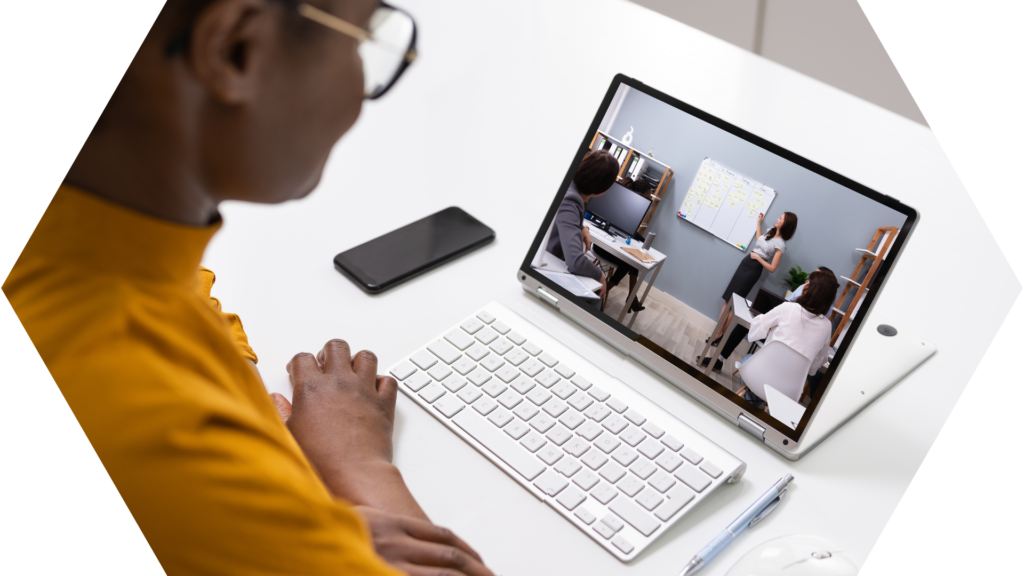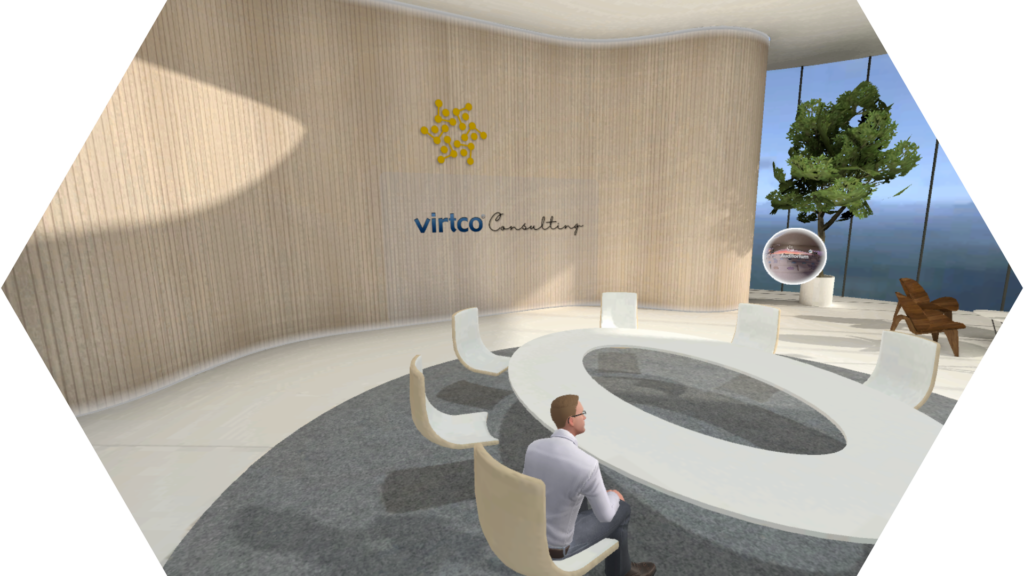
You really can ditch the commute and significantly downsize or permanently close offices. Hybrid working helps provide the answer. For nearly 2 years we haven’t really been back to the office. Now that people are starting to go back. What they find seems like the dark ages. Their meeting rooms, if they even have any communications capability at all, are only equipped with rudimentary audio-conferencing equipment, often with only a speakerphone.
Hybrid Meetings
While working from home employees had a great meeting experience and that’s what they’re expecting when they’re back in the office. Employees are expecting hybrid meetings to be as good as they have on their laptops while sitting on the sofa in their living room.
Communication and collaboration tools have been key to keeping employees engaged, connected with colleagues, efficient and productive during the pandemic, but their rapid deployment created many challenges.

The pandemic brought the need for businesses to have effective online collaboration tools into focus. Those businesses with limited or no capability quickly overcame some of the barriers that had previously held them back and everyone signed up for their favourite online collaboration tools just to keep working.
As a result of the knee-jerk reaction to keep their workforce connected, many businesses had no defined strategy, no single vendor and no plan for the future. Businesses deployed a plethora of communication and collaboration tools such as Teams, Skype, Slack, WebEx, Zoom, WhatsApp, etc. Different managers, teams, business units and departments had their own preferences, leading to confusion and a degraded experience for users collaborating across teams or business units.
Legacy meeting room equipment, where there is some, isn’t compatible with the remote toolset. There are problems with legacy network infrastructure and patchy wifi in the offices. Forcing either in-person meetings with additional travel, or just not using the meeting rooms at all.
A New Operating Model
As the pandemic eases and the global economies restart, hybrid working and hybrid meetings are becoming much more commonplace. Situations, where employees are now in the office two or three days a week are fairly standard, but this poses some new challenges.
The shift to hybrid working is a strategic business opportunity for every organization, one that requires a new operating model. Every leader will need a strategy to activate the whole organization in the move from defence to offence to gain a competitive advantage and address the urgent opportunity now. From HR to IT, to marketing and sales, to manufacturing – every function will need to come together to reimagine how to empower employees, engage customers, optimize operations, and transform products.
If you don’t plan and put policies in place now, the path to extreme flexibility will become chaos and will become more difficult to control and manage in the future. Think about your organisation’s culture and how you want that culture to evolve in such a way that it will help everyone feel included and engaged.
Define a clear flexible work policy that gives employees and teams the choice in how, when, and where they work.
Every organisation’s approach to hybrid will be unique. The key is to align as an organisation on a policy and principles to enable flexible work, and to determine what decisions you will make centrally and where you’ll empower local decision-making. Empower managers and leaders to adapt the policies you create to fit their diverse business needs and team expectations and elicit feedback from them on what works and what doesn’t.
For hybrid meetings, there is technology available which uses cameras that track the current speaker for in-room attendees such as the Microsoft Surface Hub 2S. But if you’re on a tighter budget, have those talking use their device camera even when in the room – just remember to mute to prevent feedback.

Downsizing or Ditching the Office
One of my favourite concepts of the hybrid working model is that you can downsize office space, increase hot desking and maybe, although this may be too radical for some, abandon the physical office completely – opting instead for rent by the day or hour collaboration spaces with organisations like Regus and WeWork. If you’ve gone all-in with a cloud model, then abandoning the office is a real option and the increased organisational agility, flexibility and savings make it very attractive.
It’s not as hard to abandon physical offices as you may think, there are some cybersecurity considerations and you’ll need to re-think your back-office infrastructure, but it’s all easily achievable.
We abandoned the physical office back in 2002, and as an organisation have been entirely virtual ever since (hence our name change to virtco® – virtual company). Cloud and zero-trust networking will become your best allies. The savings are significant, no more office rent and business rates, no more buying and upgrading server hardware and network infrastructure, reduced insurance and simplified regulatory compliance – I could go on. The savings can more than pay for a better home-office equipment and furniture policy and cover the occasional meeting venue hire as well as in-person team-building events.
Combatting the Lack of Face-to-Face Interactions
Typically, organisations want their employees to feel engaged, be part of the team and have opportunities to network with their colleagues. With remote, widely dispersed teams that can be more difficult to achieve.
The problem is that remote employees can start to feel lonely, disconnected and de-motivated which has the potential to decrease productivity.
But it isn’t all negative, there are some significant benefits to remote working. The lack of a commute gives a lot of time back, the average daily UK commute is 59 minutes – that’s over 220 hours a year, or about six working weeks. Employees can be more flexible about when they start and finish their working day and are more likely to stay as an employee for longer.

There are things you can do to disrupt the loneliness and help employees feel more connected to their colleagues. With modern metaverse and virtual reality technologies, it’s becoming increasingly possible to work in a virtual space with colleagues and host immersive meetings. Enabling employees to interact with each other as if they were in the same room, you can even have virtual private meeting rooms and cafés where employees can take a break and chat with colleagues.
Hosting in-person team-building events and group collaboration sessions are also a way of removing isolation and loneliness. Organise it so that everyone in a team has the opportunity to get together for a regular catch-up whether that’s online or in-person. We have a regular “coffee and catch-up” call every Friday, it’s online and we normally have them on Teams but we’ve also experimented with hosting them in the metaverse. The rules for that call are that you’re not allowed to talk about work, and it really helps to bring the team together on an interpersonal level.
As a manager you could even go to the extent of utilising services like Uber Eats, Deliveroo, or whatever similar services are available locally, to make your remote workers feel included when you have a catered team event.
Ultimately the decisions about how your organisation’s new normal will look is going to be driven by your digital workplace strategy, and the personas you have hopefully created to help inform and guide your decision-making. Remember, there is no wrong decision you can make here, except for no decision. If hybrid working is not working then iterate or pivot until you find what does work for your organisation and the people it encompasses.
Key Industries Supported
The following industries are likely to benefit or be disrupted by this technology.
You Have Nothing to Lose
If you click the button below and complete the contact form, it won’t cost you anything and you will have started a conversation to begin solving your business’s hybrid working problems. If you don’t complete the form, it still won’t cost you anything, but for certain you will not have started solving your business’s hybrid working problems.